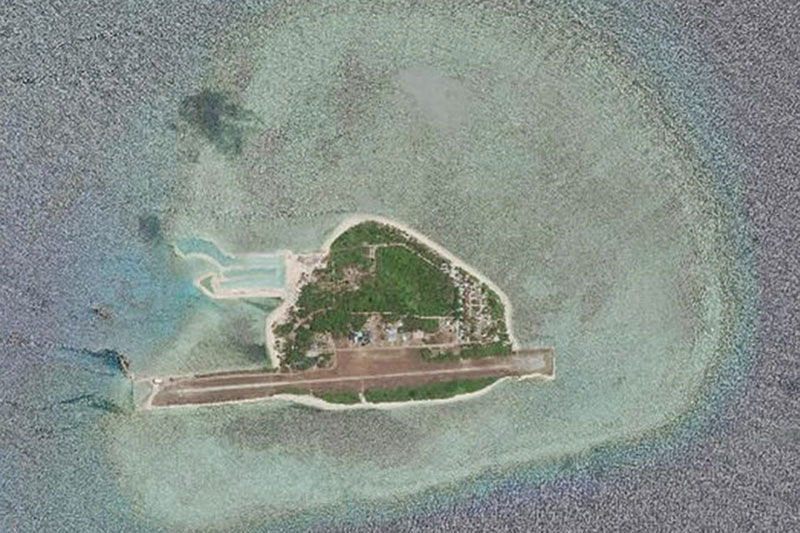
By Kenneth Christiane L. Basilio, Reporter
THE PHILIPPINES is seeking P11.1 million in compensation from China for environmental damage allegedly caused by a Chinese vessel near Thitu Island in the contested South China Sea, a top security official said on Monday.
National Security Council spokesman Cornelio H. Valencia, Jr. said the South China Sea task force supports the recommendation of the Palawan Council for Sustainable Development (PCSD) to pursue the claim.
“This incident occurred amid heightened activity by Chinese maritime militia and Chinese Coast Guard (CCG) vessels within the territorial sea of Pag-asa Island (Thitu Island), underscoring persistent operational concerns in the area,” he told a news briefing.
A Chinese vessel dropped anchor in shallow waters less than three kilometers from Thitu Island on June 7, damaging about 465 square meters of coral reef within Philippine waters, according to a PCSD environmental assessment.
The Chinese Embassy in Manila did not immediately reply to requests for comment.
Thitu Island, which the Philippines calls Pag-asa, is part of the resource-rich Spratly Islands. It is about 12 nautical miles (22 kilometers) from China’s air and naval base at Subi Reef. It is administered by the Philippines as a part of the Kalayaan municipality of Palawan Province.
The island is the largest of the Philippine-occupied islands in Spratlys and is the only one with a permanent civilian settlement.
China claims nearly the entire South China Sea under its so-called nine-dash line, which overlaps with the exclusive economic zones of several countries, including the Philippines, Vietnam and Malaysia.
In 2016, a United Nations-backed arbitral tribunal based in The Hague voided Beijing’s sweeping claims. China, however, refuses to recognize the ruling.
Philippine Coast Guard (PCG) spokesman Jay Tristan Tarriela said the PCSD report would be forwarded to the Justice and Foreign Affairs departments for appropriate action.
“It’s up to these two agencies how they can be able to enforce this damage claim as a result of the findings,” he added.
Mr. Tarriela expressed hope that China would pay for the reef damage. “We still accord with them the sense that they are a responsible member of the international community.”
A six-member dive team was deployed on June 17, 10 days after a Chinese vessel bearing hull number 16868 dropped anchor in waters nine meters deep. The team found that roughly 30% of the coral reef patch had been damaged.
PCSD Executive Director Teodoro Jose S. Matta said the affected area was a designated “no-touch zone” by the Philippine government. “No human activity is supposed to be allowed there,” he said.
PCSD biologist Mark Ace V. Dela Cruz detailed the extent of the damage: “The damage we observed consisted of broken fragments. Specifically, broken pieces of branching corals and chipped-off fragments from massive corals.”
Benjamin Jareta Gonzales, a member of the PCSD’s scientific advisory panel, warned that the anchor left by the Chinese ship could cause more harm if not removed.
“The anchor parachute will continue to cover the corals, denying access to sunlight,” he said. “Without sunlight, the coral reef will die.”
He added that the anchor could shift during rough sea conditions, causing additional damage and producing microplastic waste through further contact with the reef.
Mr. Dela Cruz said the dive team initially tried to retrieve the anchor but found it too heavy. “It’s made of high-density nylon material. We tried lifting it, but it was just too heavy,” he said in mixed English and Filipino.
The Philippine Coast Guard is expected to help in retrieving the anchor. Mr. Tarriela noted that the operation would require calm seas and specialized lifting equipment to ensure safety.
The reef damage comes amid escalating tensions in the South China Sea, where Chinese Coast Guard and naval ships continue to enter waters claimed by the Philippines, drawing regular diplomatic protests from Manila.